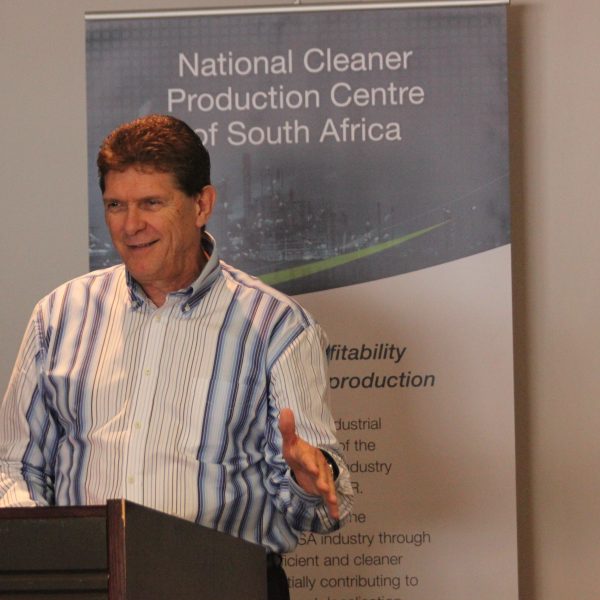UNIDO has steadily grown its cohort of international and national experts across a range of energy efficiency specializations. With collective experience in all of the world’s major industrial countries and regions our network of specialized consultants have a long track record of leading organizational teams to achieve impressive results. Find out more about them.
Active filters
Result of filter: 7
Frequently asked questions
Energy management systems
There are now many hundreds of examples of industrial and other organizations that have significantly improved their energy performance through the implementation of an effective Energy Management System (EnMS). They have succeeded in reducing energy costs; reducing other related costs; reducing their exposure to volatile energy prices and often; more importantly, in getting better control over their technical processes and improving productivity and process stability. If your organization is willing to put in the effort and commitment to implement an effective EnMS, it can help to transform many aspects of your technical processes.
Organizations that are successful in implementing EnMS’s generally have a committed energy manager. Such managers are able to overcome the inevitable obstacles encountered in what is essentially a change management process. They are successful in getting support from top management and in persuading their fellow energy team members to deliver on the promise of a systematic approach to energy management. Support, leadership and commitment from the top are essential.
Many companies purchase software and have the impression that this is an energy management system, but it is not. The purpose is to save energy and it’s very common to keep forgetting this. We do need check lists, we do need processes, auditing and software, but ultimately this must all lead to energy savings. At the end of the day an EnMS is mostly about people and management.
In the management system field we often talk about the importance of top management involvement. But, in reality, there is a need for involvement from people at all levels. Critically, an effective energy management system requires a dedicated energy management team. This is a core group of people that has a good understanding of the various parts of the organization and the energy implications.
Education is the foundation of energy management, and will be most effective when it is a subject taught from the lowest grade at school through to the highest at university. Until then, every business or institution or workplace should, as part of induction, contribute by educating employees about efficient use of energy so that it can become part of everyone’s culture. Examples could be displayed; meters could be used to show the environmental and financial costs, creating first awareness and then behavioural change. Promoting this with as many people as possible is what drives the foundation of good energy management and the “culture of energy performance improvement” highlighted in ISO 50001.
Motor-driven systems
Electric motors represent around 70 per cent of the electricity consumed in industry. It thus follows that electric motors will play a key role in the drive towards reducing energy consumption in industrial environments. Improving energy performance through motor system optimization is a very important strategy for sustainability, to reduce operating costs and to promote higher reliability in the plant. It’s a ‘no regrets’ option.
System optimization approaches address the entire motor system, from the power supply to the final end use application and everything in between. A motor is considered just one of many opportunities for optimization. Just like in an orchestra, there is no room for poor performance in a motor system because you can ruin the performance of the entire system with just one weak component.
A motor does not operate in isolation. Rather it forms part of a chain of devices that transfers energy from an energy source to the desired task. At one end a motor is connected to an electrical network. At the other end it is connected to some mechanical device like a pump or fan that provides the application of the energy for the required end usage. Sometimes there may be a gearbox or pulley belt connecting the motor and the mechanical device. All these parts work together to produce the end result. It therefore follows that all of these components should be optimized as a single unit to achieve improved energy performance.
Typically, in line with the Pareto Principle, 20 per cent of the motors in a plant are responsible for 80 per of total motor energy consumption. This is important to keep in mind when dealing with a large plant that uses thousands of motors. Assessing all of an organization’s motor systems at once would be an overwhelming task. It is recommended to use a phased approach and start with the top 15 motor systems in terms of overall energy consumption. These would be the larger motors that operate for the highest number of hours per year.
The most widely used electric motor is the induction motor, which was invented by Nicola Tesla about 125 years ago. This old technology is still widely used today.
In the old days, most motors were connected directly to the main supply and they worked at a constant high speed. This was not ideal for energy efficiency, so in the sixties General Electric invented the variable speed drive. However, it was an extremely expensive device at the time. By the end of the 20th century variable speeds drives were cost-effectively produced in mass thanks to the reduction in price of microelectronics. Today there are roughly 5 million variable speed drives and 8 million industrial motors made in Europe each year. Now more than half of new motor installations in Europe use a variable speed drive. This is an amazing transformation in a relatively short period of time.
1) Raise awareness about the cost of energy in the plant. Encourage people to understand the true costs of energy consumption.
2) Understand the end-use requirements of each motor system. Don’t deliver more water, gas, heat, motion or air than is actually required.
3) Ensure that motor systems are switched off or slowed down during non-productive periods, such as during holidays, weekends and lunch breaks.
4) Make sure that wastage is minimized. Check for leaks in pumping or compressed air systems. Limit restrictions and obstructions in fluid transfer systems.
5) Get top management on board. The culture of an entire organization needs to change to achieve long-term energy efficiency goals.
Cooling systems
There are several differences depending on the application, controls, complexity, levels of cold temperatures and amount of cooling load. In a household refrigerator, the operation is very simple, the load is small and fixed, and it operates in a ON/OFF mode which means the energy efficiency of the unit is pretty much set. Most of these units adhere to strict energy efficiency standards and a labeling program. Conversely, when you consider a large industrial cooling process there are multiple pieces of different equipment which have their own individual efficiency curves and control strategies. Depending on how the overall system is setup, there could be numerous different operating configurations to meet the cooling demand. Additionally, the load can constantly change requiring the system to respond immediately.
In the UNIDO training methodology, we aim to teach and convey the understanding of the whole system and how it responds and works together as one system to meet the cooling demands. Our training focuses on making attendees see the big picture, but it also gives them the tools and resources to drill down into the details to make any process cooling system energy efficient, highly reliable while reducing corresponding greenhouse gas emissions and their operating costs. Furthermore UNIDO is a vendor-neutral and technology-neutral organization. Simply put UNIDO is looks out for the best interests of all the stakeholders.
Process cooling components with their state-of-the-art technology and controls have come a long way in the past three decades. Equipment manufacturers and technology providers have made some huge gains in providing industry with whatever one needs and we see a lot of SMART technology out in the market. This all has been at the design level and one can be confident that they can get a system they want. But when it gets into operations, this is where the rubber meets the road and everything breaks down. Technical expertise to understand system operations, control them at their optimum levels at different operating conditions, identify potential improvement opportunities as demands change is very much lacking. In many cases, industry treats the process cooling system as a black box. So long as the process cooling system can meet the setpoint cold temperature that is all that matters. Thinking in this way dismisses the vast potential and benefits that cooling system optimization can offer.
A good way start is by asking them if they knew what percent of their total energy use was consumed by their process cooling systems. Then make them understand that there could be a lot of low hanging fruit in their process cooling systems. These opportunities would require minimal capital and would not only enhance the energy efficiency of their system but also improve their system reliability. Using the current state-of-the-art technology and best practices knowhow, it is possible to make operational, behavioral, restorative and system-level modifications that can easily lead to 15% or more of system energy savings. This money would directly go to to company’s bottom-line.
Energy measurement performance indicators and metrics
Energy performance indicators compare the energy consumption of one site in a particular reporting period with the energy consumption of the same site in a reference period often referred to as the baseline. Energy performance indicators are often used as a measure of continual improvement, or to detect unexpected deviations and enable timely responses, or to justify specific energy efficiency interventions, within a particular site. Unlike energy performance indicators, which compare a plant or an organization’s performance against itself, benchmarking is a comparison between different sites inside the same industry and/or sector or even between different industries. For example Canada‘s Office of Energy Efficiency benchmarked the energy use of various national industries including ammonia, cement, fertiliser, food and beverage, mining, oil sands, petroleum products, pulp and paper, steel, textiles, and transportation manufacturing facilities. In the Netherlands, benchmarking encourages industrial companies to compare themselves to their peers and to commit to becoming among the top 10 per cent most energy-efficient plants in the world (Commissie Benchmarking, 1999). In the United States, ENERGY STAR provides Energy Performance Indicators (EPIs) and excel based tools to help industrial companies benchmark industrial plant energy performance. Lawrence Berkeley National Laboratory, also in the United States, developed BEST, ‘Benchmarking and Energy Saving Tool,’ for industry to benchmark a plant‘s energy intensity against international best practice. UNIDO has even provided a series of benchmarks over the years for industrial organizations in low to middle income countries that want to compare their energy performance to competitors in upper-income countries.
It is not possible to compare absolute energy consumption in two different periods because the variables that affect energy consumption are different in each case (i.e. weather, production volumes, raw materials, etc). Normalizing energy consumption data involves taking into account the impact of numerous variables which may affect energy performance. This way an organization is more accurately able to compare the energy consumption in different periods without being influenced by external variables. Normalization is typically achieved through regression analysis, which is a statistical process designed to control for factors (variables) that are relevant to your energy consumption assessment and those which are not.
Various indicators are widely used around the world to assess, monitor and measure energy performance. Absolute consumption is widely used to monitor CO2 emissions or costs. Specific energy consumption (kWh/t, kWh/unit, €/t, €/unit) is used in cost allocation activities. But none of these methods can be reliable energy performance indicators because they do not take into account the impact of all the relevant variables that can affect energy performance. Measuring specific energy consumption, in particular, does not consider the impact of the baseload (the energy that is consumed even when production is idle). As a result, it tends to show big or fake excesses with low productions and misleading energy savings with high productions. On the other hand normalized, model based, energy performance indicators take into account all the variables that affect consumption, such as weather conditions, production, raw materials, occupation, etc. This is a more accurate approach.
The answer is always different depending on your dominant processes and energy system. Typically, relevant variables include weather (operationalized in the form of heating degree days or cooling degree days), production quantity and product mix, raw material quality etc. In general it can be distinguished between “relevant variables” and “static factors”. Relevant variables being things that routinely change and that cause energy consumption to vary such as production volumes and occupancy. Static factors being things that remain fixed or constant such as the floor area of a building or the type of product produced.
Installing meters is not a requirement. It is always possible to start analyzing monthly data based on your energy bills. Weather data is available on the internet and the main relevant variables in organizations are usually accounted, at least, on a monthly basis. But installing energy meters, at least among the main energy users, can be very helpful in order to monitor performance of each independent process. This way it is possible to detect where the deviations come from or calculate in specific parts of your organization or production process.






